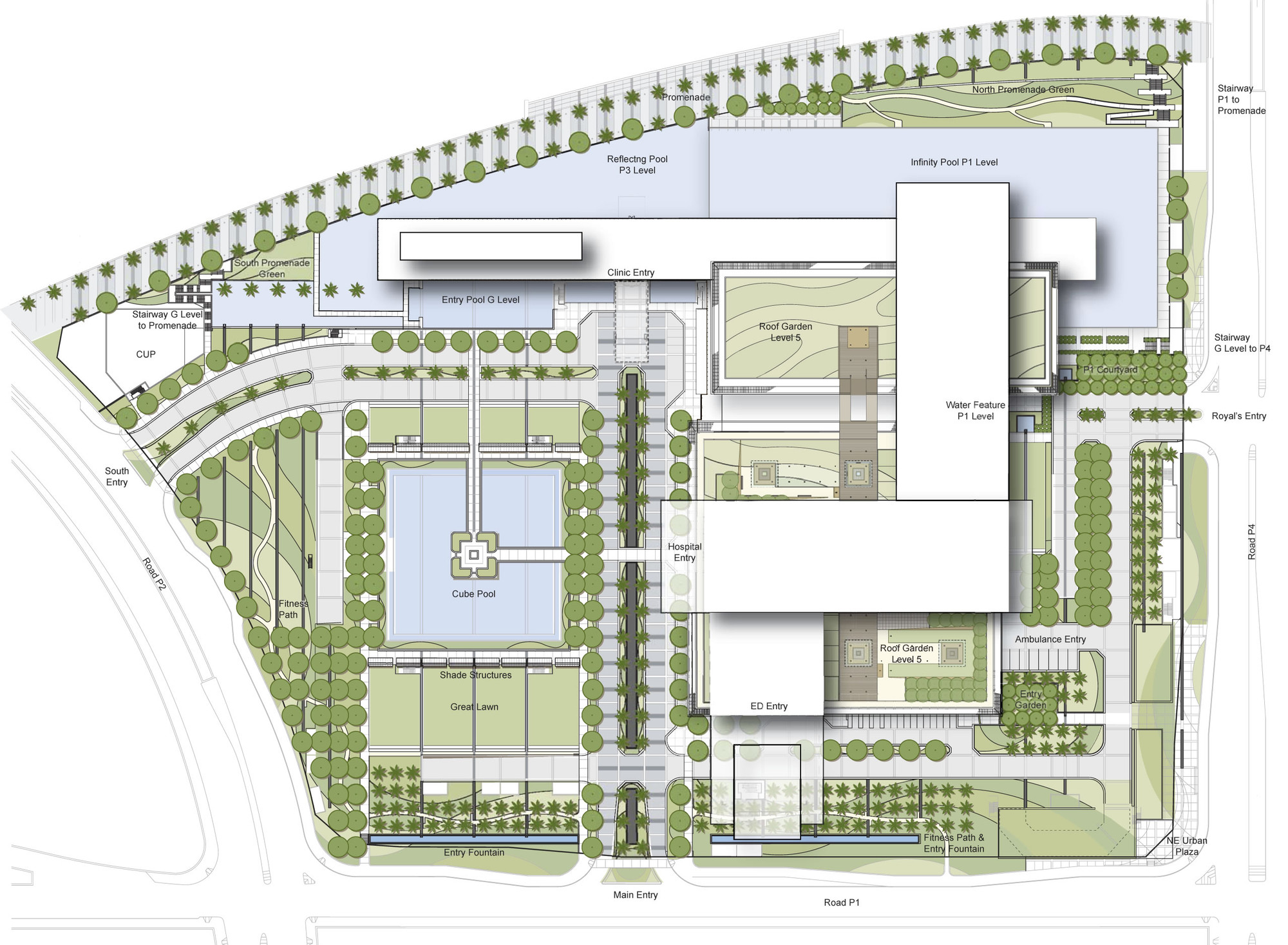
Architects
Location
Abu Dhabi, UAEProject Year
2013Photographs
Courtesy of HDR Architecture
The HDR-designed Cleveland Clinic Abu Dhabi, one of Abu Dhabi's flagship healthcare projects, is set to open in the fourth quarter of 2013. The multi-specialty facility extends the U.S.-based Cleveland Clinic model of care, offering a range of tertiary and quaternary medical services that will bring world-class healthcare to Abu Dhabi and the region.

Located on Al Maryah Island in the heart of Abu Dhabi’s new central business district, the 364-bed (expandable to 490-bed) facility is organized into five institutes: Digestive Disease; Eye, Heart and Vascular; Neurological; Respiratory; and Critical Care. As in the United States, the hospital will be a physician-led medical facility served by western-trained, board-certified physicians. It will be one of the most advanced, high-tech and luxurious hospitals in the world.

“The term ‘hospital of the future’ is used quite often, but I can’t imagine another facility that reflects that phrase more than the Cleveland Clinic Abu Dhabi,” says Mohammed Ayoub, lead HDR designer for the project. “It’s a building that blends cutting-edge technology, evidence-based design, world-class care, and Arabic culture with elegant architecture—creating a facility that looks more like a seven-star hotel than a hospital.”

The image of the campus, with its verdant gardens, glowing double-skinned patient tower, distinctive diamond-glazing, modern interiors and colorful massing exemplifies the best of what medical care can be. The design is overlaid with a suite of cultural references that ground the project firmly in Abu Dhabi. The color palette represents surrounding natural elements, such as the turquoise of the Gulf waters and the array of neutrals of the desert, and interior patterns and motifs reflect the local vernacular, as seen in Arabesque patterned screen elements throughout the building.

To avoid the characteristic maze of many hospitals, each healthcare component is expressed in an individual architecture form, arranged to express the continuum of healthcare— the Cleveland Clinic model. The blocks are elegantly stacked around a central reflecting pool; the entire design literally and figuratively founded on water, a universally recognized source and symbol of serenity and healing. This grouping of blocks creates efficiencies for the staff and obvious wayfinding for visitors, replacing winding hallways with sleek glass walkways that connect the inpatient spaces with the 340-exam room outpatient clinic, 210 faculty offices, conference center, simulation center and administrative building.

The interior concept is based on blurring the lines between hospital and hospitality. The interior materials—glistening onyx and warm, rich wood tones—soften, and, at the same time, anchor the interior to the exterior. Indoor water elements impart white noise to calm patients and provide a sense of tranquility, while green spaces boost mental alertness and create gathering areas that reinforce the hospital’s sense of community.
The patient rooms are intentionally designed with large family spaces and amenities to involve the family in the healing process. Abundant windows with views of lush rooftop gardens and the Arabian Sea provide a soothing atmosphere that advances wellness and recovery.

Although the entire facility is designed following LEED Gold principles, the most notable sustainable design feature is the double-glass curtain wall, perhaps the first-ever utilized in a hospital. The curtain wall creates a stack or “lung” effect, allowing the building to “breathe.” The process works by strategically placing the mechanical floor at the bottom of the hospital tower, exhausting cool air previously used within the hospital from the bottom of the tower to the stack between the double curtain wall and eventually out through the roof. This exhaust creates a protective buffer between outside air and the interior of the building. Moreover, air is cooled in a tripartite approach using sea water, heat reclamation, and used cool air exhausted through the five-foot-wide space between the two glass curtains walls.
“Our goal with this project is to deliver a building that is beyond state of the art,” adds Ayoub. “It will provide a standard of care and service that is simply not available anywhere in the region. And it will do so in an iconic facility that is sure to stop people in their tracks.”

Cleveland Clinic Abu Dhabi is being developed by Mubadala Development, a government-owned investment and development company, and operated by Cleveland Clinic. Key team members, include:
· Aldar Properties—Development manager
· HDR—Design architect through 30%completion of construction documents
· AEDAS—Architect taking construction documents from 30% completion to 100% completion
· Sixco-Samsung (joint venture)—General contractor
· AECOM—Building-engineering services
















